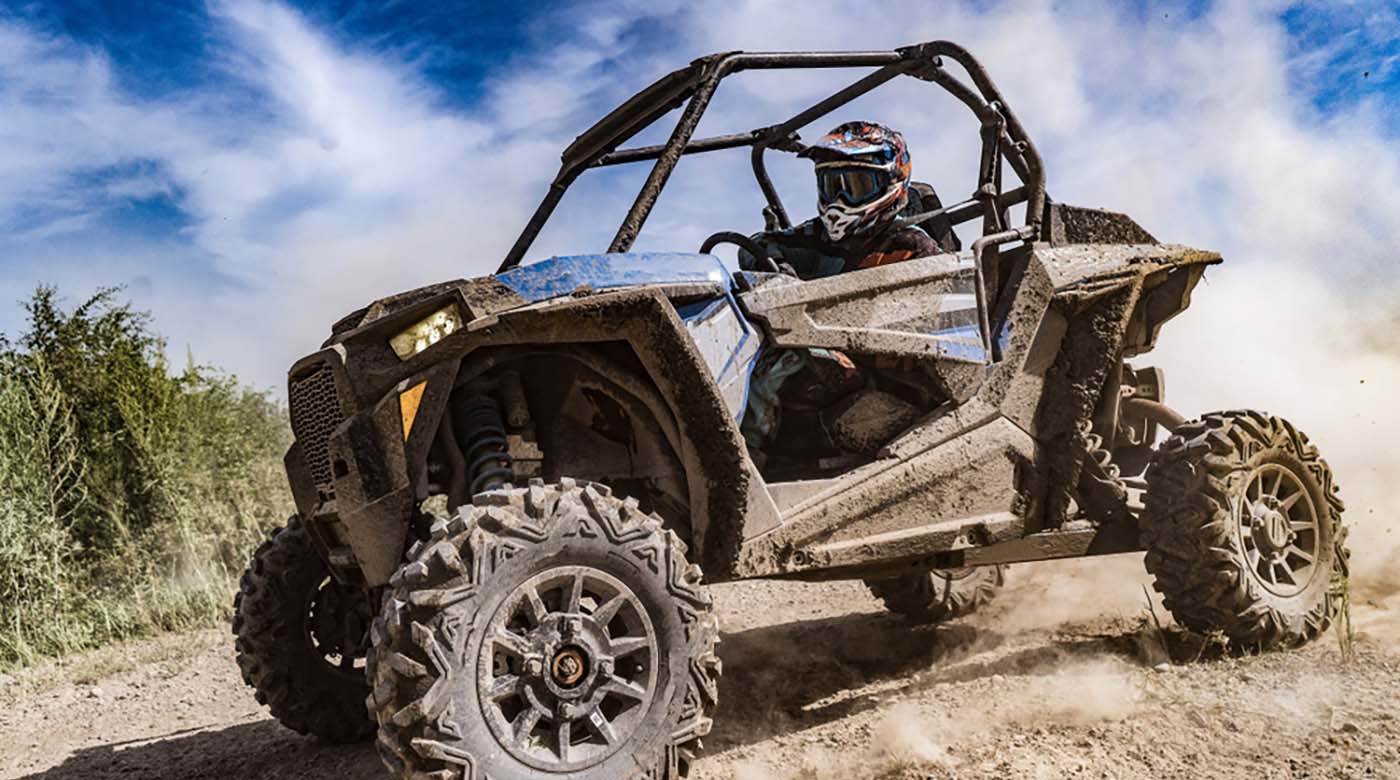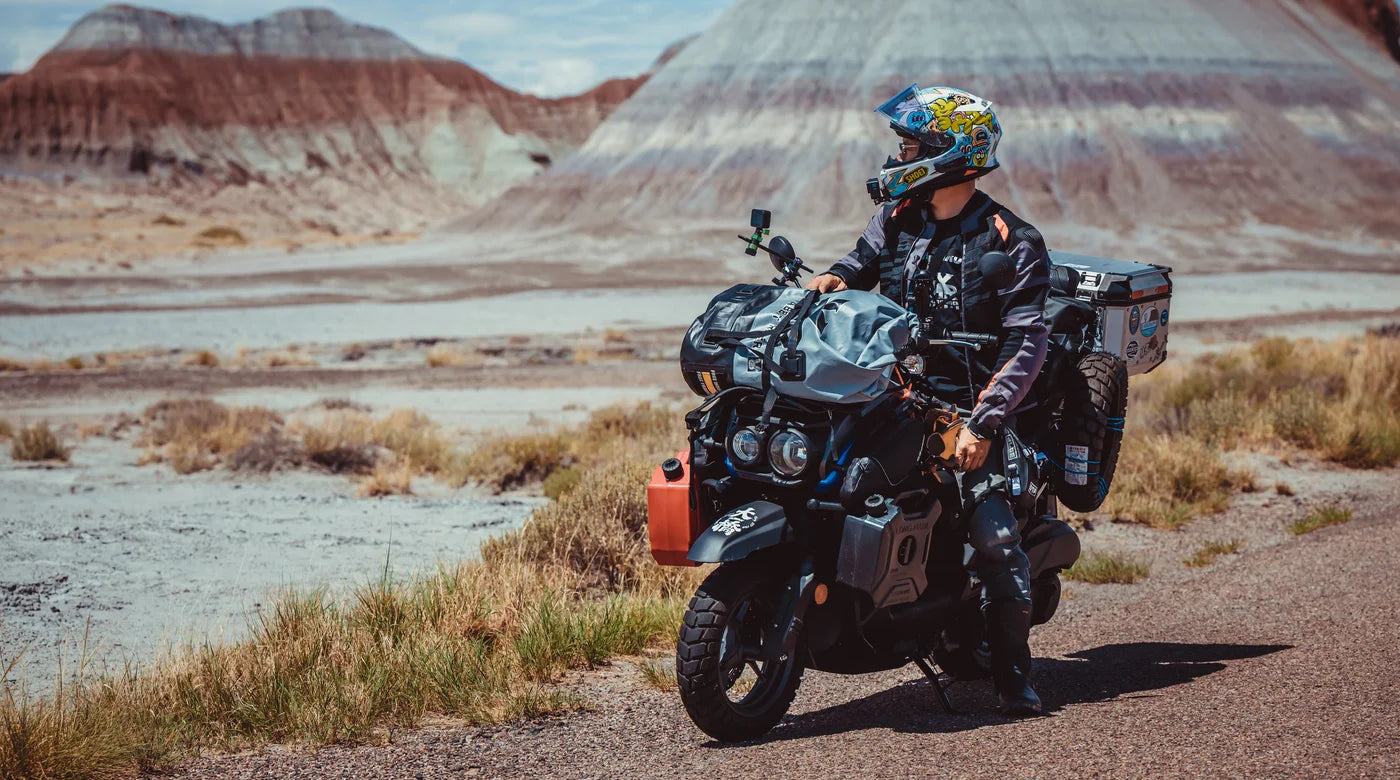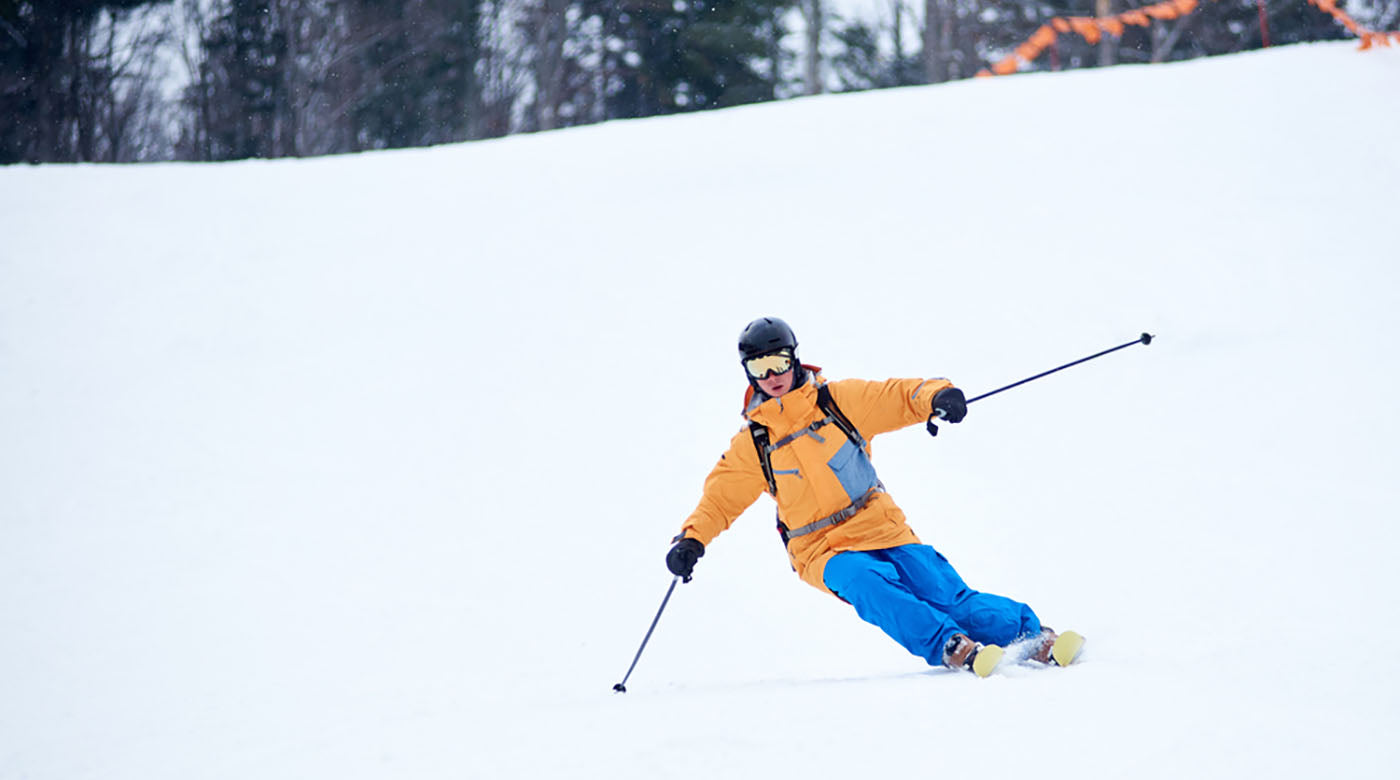Side-by-side off-road vehicles make for the ultimate two-person adventure. You and your friend or significant other can explore deep into the mountains, cruise up and down the beach and take private tours of the country’s best national parks.
The latest side-by-sides have the acceleration and horsepower of luxury sports cars. Some models even go from zero to 60 mph in five seconds. However, these vehicles are mainly designed for off-road use, but they can be driven on streets with a few modifications. Learn about driving restrictions for side-by-sides in all 50 states.
Are Side-by-Sides Street Legal?
The short answer is no.
Most side-by-sides are designated for off-road purposes only. They lack the accessories and features needed to travel on paved roads and navigate on-road traffic, such as windshields, mirrors and turn signals.
The longer answer: it depends.
Side-by-sides can be made street legal by adding the necessary elements. You may be able to purchase a street legal SxS, but most need to be modified before they can be used on public roads in certain states. You also need to apply for registration and get insurance.
Every state regulates the use of on-road motor vehicles. Many prohibit the use of side-by-sides on public roads, full stop. Others have specific requirements for side-by-sides and other off-road vehicles driving on streets.
However, in most areas, you can cross public roads with minimal traffic to connect to an off-road trail. Farmers and agricultural workers may also be excused in certain situations.
Stay Connected with the Packtalk Edge ORV
Source: Anton Tolmachov/Shutterstock.com
Where Can Side-by-Sides Be Made Street Legal
Don’t put in the time and effort to convert your side-by-side if your state doesn’t allow them on public roads.
States where side-by-sides can’t be made street legal include:
- Alabama
- Arkansas
- California
- Colorado (though legal in some jurisdictions)
- Connecticut
- Delaware
- District of Columbia
- Florida
- Georgia
- Hawaii
- Illinois
- Indiana (allowed in some counties)
- Kentucky
- Louisiana
- Maine
- Maryland
- Massachusetts
- Minnesota
- Mississippi
- Nebraska
- Nevada
- New Jersey
- New York
- Oregon
- Pennsylvania
- Rhode Island
- South Carolina
- Texas
- Vermont
- Virginia
States where side-by-sides can be made street legal include:
- Alaska
- Arizona
- Idaho
- Iowa
- Kansas
- Michigan
- Missouri
- Montana
- New Hampshire
- New Mexico
- North Carolina
- North Dakota
- Ohio
- Oklahoma
- South Dakota
- Tennessee
- Utah
- Washington
- West Virginia (considered legal when registered as a Special Purpose Vehicle)
- Wisconsin
- Wyoming.
How to Make Your Side-by-Side Street Legal
If you live in a state where side-by-sides can be made street legal, check the requirements at your local Department of Motor Vehicles. Some cities and jurisdictions have additional restrictions for SxSs, making the process more complex. These regulations vary over time, so keep checking for updates to stay clear.
At the very least, you’ll need to add:
- Head and brake lights
- Turn signals
- Reflectors
- Rear and side-view mirrors
- Full windshield and wipers
- Seat belts
- Horn
- Odometer and speedometer
- Spark arrester to prevent the spread of harmful emissions
- Muffler at 96 dB or less to reduce noise pollution
You’ll also need to swap your rugged off-road tires for on-road tires with smaller tread patterns that make more contact with the road.
When registering your side-by-side with the DMV, you’ll need the title to show proof of ownership, insurance, ID, proof of residency such as your lease or utility bill and proof of inspection.
Sign up for an insurance policy at a company that covers modified SxSs. You’ll need liability insurance to cover physical injuries and property damage. You can also add collision coverage to include damage to your side-by-side, comprehensive coverage for non-collision damage, uninsured motorist coverage and medical coverage for hospital bills.
You and your companion should always wear helmets when riding a side-by-side to reduce the risk of head injury. The sound of traffic and traveling at high speeds can make communicating behind the wheel challenging. Pair your safety equipment with off-road headsets and sync automatically to talk to your passenger. You can focus on the road while your partner navigates using their phone or GPS.
Use Off-Road Headsets to Communicate Hands-FreeUse the Packtalk Edge ORV to sync with up to 15 riders at a time using Dynamic Mesh Technology. It creates a direct link between every rider so you don’t lose a signal even if the formation changes. If you don’t make the light, the headset relinks automatically as soon as you’re back in range.
Even if your side-by-side is street legal, these vehicles lack the collision reduction systems of today’s cars, trucks, vans and SUVs, increasing the risk of structural damage. Wear the proper safety gear even on smooth rides.

Source: Mindscape studio/Shutterstock.com
Side-by-sides aren’t made for public streets, but you can still have the adventure of a lifetime on private property and designated off-road trails. If you’re looking to make your side-by-side street legal, ensure to read this guide fully before embarking on the next steps. In the meantime, get on the trails and enjoy the ride!





